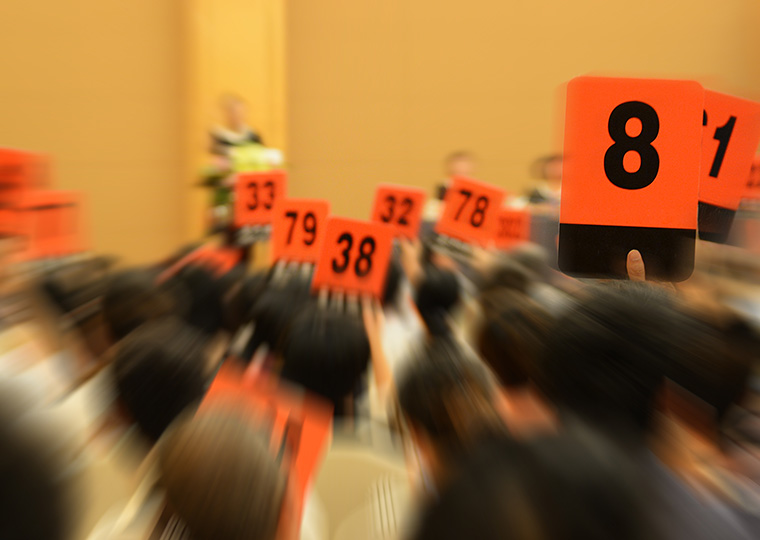In certain competitive situations, cost transparency can provide an edge
For brands these days, millennials are the 500-pound gorilla: They get what they want, and what they want is transparency — about a seller’s supply chains, business practices and environmental impacts.
Companies are responding with increased openness with one big exception: their costs. When it comes to disclosing what they pay for raw materials, labor and transportation, businesses tend to clam up, and with good reason. Revealing costs can give an edge to competitors, limit a firm’s ability to set higher profit margins and create an impression among customers that prices are unfair. Yet, research suggests, consumers like the practice and will reward cost transparency with greater loyalty.
When to adopt a strategy of cost transparency — and how to do it right — is the subject of a working paper by Wei Shi Lim of the National University of Singapore, Vincent Mak of Cambridge University, UCLA Anderson’s Christopher Tang and Cambridge’s K.C. Raghabendra.
Opt In to the Review Monthly Email Update.
Based on analytical models and a laboratory experiment, the researchers suggest that the best predictor for whether a strategy of cost transparency will be profitable is the perceived quality of a brand’s products. But the calculation is far from simple.
When a brand faces a much higher-quality competitor, it usually benefits from being transparent about its costs. However, when the perceived quality differences are large, such as between a mass-market and a luxury retailer, both firms are better off keeping costs hidden because different firms can use different selling prices to segment the market. When the quality differences are small — between two mass-market or two luxury brands — both companies should opt for openness. That’s because transparency gives enough of a competitive edge that either company risks the loss of market share and lower profit margins if it keeps costs hidden.
Another important factor is how much consumers value transparency, and it comes into play when the perceived quality differences are neither very great nor very small. Consider the case of Everlane, a San Francisco-based online clothing company that competes with Gap Inc. and similarly mid-market brands. Everlane explicitly appeals to millennials and practices what it calls “radical transparency,” providing details about its factories and a breakdown of the costs involved in every item.
For instance, on the Everlane website, a men’s parka selling for $165 shows costs of $27.79 for materials, $5.64 for hardware (such as zippers), $22.26 for labor, $3.95 for customs duties and $5 for transportation. In 2018, Fast Company named Everlane one of the World’s Most Innovative Companies. Although the strategy remains extremely rare, cost transparency can be profitable for Everlane, the model suggests, because it can use transparency to compensate for its perceived lower quality. (It’s worth noting here that “lower quality” isn’t a reflection on its products but instead represents its brand image in comparison with the well-established Gap.) Gap, by the same token, can afford to remain opaque about its costs. “By leveraging the transparent strategy, Everlane can boost consumers’ willingness to pay [even though] the perceived quality is lower,” the authors write.
If Everlane were mainly vying with a luxury brand, the model suggests, transparency would be unnecessary because Everlane could compete more effectively strictly on price.
The researchers turned to a laboratory experiment to validate the model’s results. Roughly 300 students from a major Singapore university were paired as competing sellers, with one randomly assigned to be a higher-quality brand. Each participant independently decided whether or not to adopt transparency and then set a selling price. Next, a computer program simulated the purchases of a group of consumers, making its choice based on the researchers’ model. Participants went through 30 rounds of selling and could change their choice about cost transparency and their price between rounds.
The results were generally consistent with the model’s predictions and showed that the participants gained experience about the value of transparency. Sellers of lower-quality brands became more likely to adopt transparency by the end of the experiment than the higher-quality brand’s seller. When the differences in quality were small, both sellers moved, over time, toward more and more transparency; and when quality differences were great, they increasingly chose less openness.
The experiment turned up one unexpected result. In the case where quality differences were more moderate — such as in the Everlane and Gap example — sellers used transparency less often than the model predicted. This suggests that sellers in the experiment were reluctant to set profit margins as high as they could have, and as a result failed to take full advantage of a strategy of transparency.
Featured Faculty
-
Christopher Tang
UCLA Distinguished Professor; Edward W. Carter Chair in Business Administration; Senior Associate Dean, Global Initiatives; Faculty Director, Center for Global Management
About the Research
Lim, W. S., Mak, V., Tang, C., & Raghabendra, K.C. (2018). Adopting cost transparency as a marketing strategy: Analytical and experimental exploration.






